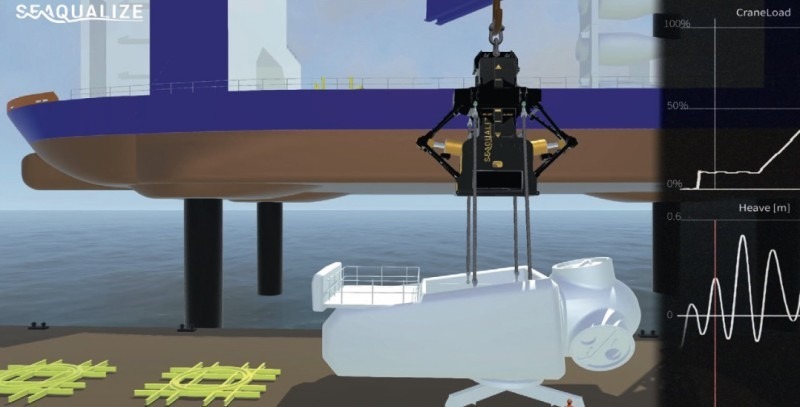 MARIN helps to increase the workability of SOVs
MARIN helps to increase the workability of SOVs
Service Operation Vessels are used for installation and maintenance activities on offshore wind turbines. These vessels are typically equipped with large Dynamic Positioning systems and motion compensated gangways and cranes so they can work in challenging sea conditions.
Energy can be reduced by smart interaction between multiple onboard control systems. For example, by relaxing the DP stiffness and fully using the gangway’s capabilities can significantly improve fuel consumption. Apart from direct fuel savings by smarter system control, downtime can be reduced by improving planning and decision support, which is based on accurately predicted ship motions.
Delta600 by Seaqualize
Another example to increase workability is the Delta600 by Seaqualize. This is an active hook-based, in-air, heave compensation tool for loads up to 600mT. In a project subsidised by the Netherlands Enterprise Agency (RVO), MARIN has helped in this development by assessing the workability and establishing a horizontal motion compensation strategy. MARIN is also involved in prototype testing and the development and validation of a numerical model to calculate motion behaviour.
OOAS JIP
In the Offshore Operational Advisory Systems (OOAS) JIP, fuel efficiency and the uptime of SOVs and installation vessels is improved by accurate onboard advice given during crew transfers. The advisory and planning tool developed as part of the JIP expects to decrease downtime by 10-20 working days per year! The JIP includes Acta Marine, MO4, Next Ocean, Radac and SMST and is led by MARIN. Visit www.marin.nl/jips/ooas for more information on objectives and deliverables.

